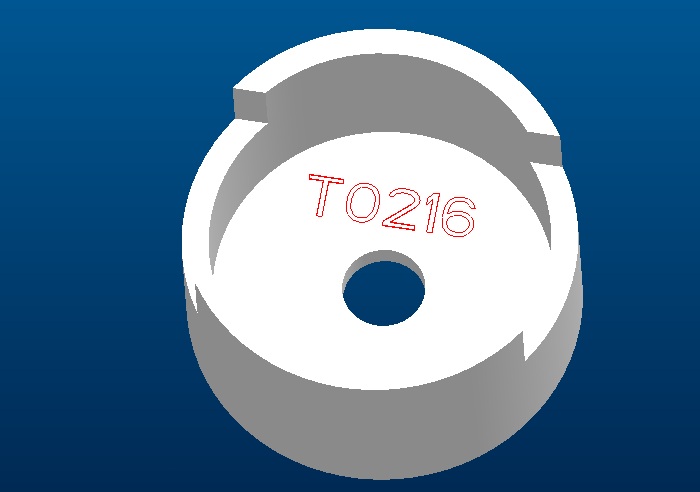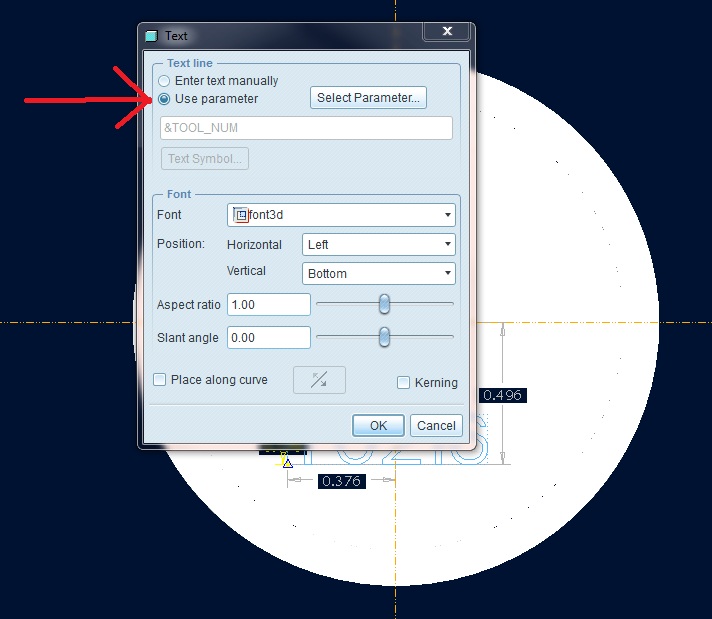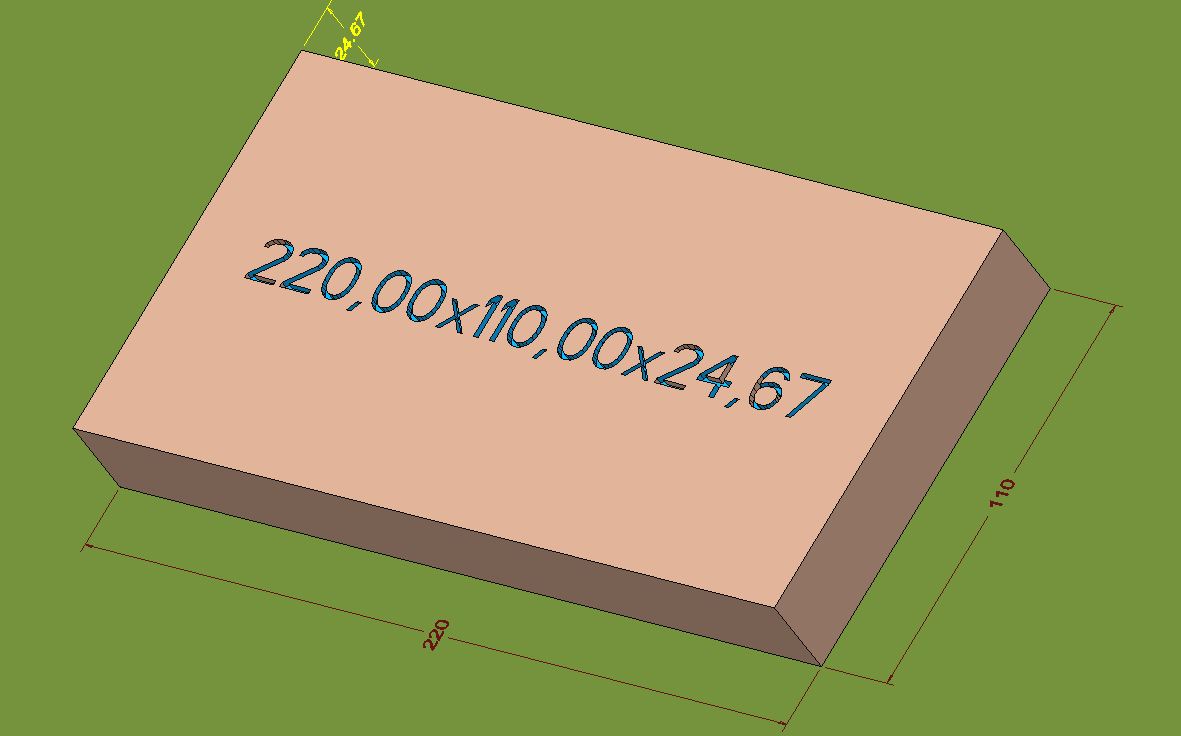Community Tip - You can change your system assigned username to something more personal in your community settings. X
- Community
- Creo+ and Creo Parametric
- 3D Part & Assembly Design
- Text Extrude Parameter / Family Table
- Subscribe to RSS Feed
- Mark Topic as New
- Mark Topic as Read
- Float this Topic for Current User
- Bookmark
- Subscribe
- Mute
- Printer Friendly Page
Text Extrude Parameter / Family Table
- Mark as New
- Bookmark
- Subscribe
- Mute
- Subscribe to RSS Feed
- Permalink
- Notify Moderator
Text Extrude Parameter / Family Table
I am extruding a text into a part. It is for fixturing and there are several of these for different diameters. How do you find the parameter for the text that is being extruded. When I go to Info/Switch Dimensions, I only get the location of the text, but not the paramter for the text. Do I need to difine the paramter and then type in ¶mter_name into the text box for this to work?


This thread is inactive and closed by the PTC Community Management Team. If you would like to provide a reply and re-open this thread, please notify the moderator and reference the thread. You may also use "Start a topic" button to ask a new question. Please be sure to include what version of the PTC product you are using so another community member knowledgeable about your version may be able to assist.
Solved! Go to Solution.
- Labels:
-
General
- Tags:
- family table
Accepted Solutions
- Mark as New
- Bookmark
- Subscribe
- Mute
- Subscribe to RSS Feed
- Permalink
- Notify Moderator
Found it already:
In the text box, you click on paramete versus using text manually. Guess I never really paid attention to that before.
- Mark as New
- Bookmark
- Subscribe
- Mute
- Subscribe to RSS Feed
- Permalink
- Notify Moderator
Found it already:
In the text box, you click on paramete versus using text manually. Guess I never really paid attention to that before.
- Mark as New
- Bookmark
- Subscribe
- Mute
- Subscribe to RSS Feed
- Permalink
- Notify Moderator
This one got my curiosity going. And of course, it was another adventure.
Suppose you wanted to use a real_number parameter for the stamping. Suppose you only wanted a properly rounded version of that value. You'd think that was simply, huh!
Well, we all know about the variable appendage for a shortened real_number variable as "[.1]" or "[.2]", etc.
That doesn't work here, does it! ![]()
So I went back to a very helpful discussion that explored this very issue and whallah! Our good friend Martin was way ahead of our time in that thread...
http://communities.ptc.com/message/187067#187062
I put to good use the clever recommendation by Martin as to how you can turn the real_number parameter into an accurate rounded string variable. Now you can select this new string parameter and it becomes an intelligent associative sketch text feature.
Imagine having to "scribe" material thickness, unit weight, or even revision number in a specific format on a part. Since you cannot use the [.n] in this dialog (not even in Creo 2), have a read at the linked thread and learn how to accomplish this.
Thanks again, Martin! And thank you, Dale.
- Mark as New
- Bookmark
- Subscribe
- Mute
- Subscribe to RSS Feed
- Permalink
- Notify Moderator
Now, that's awesome.
- Mark as New
- Bookmark
- Subscribe
- Mute
- Subscribe to RSS Feed
- Permalink
- Notify Moderator
Jakub,
Is there away to have it be half written text and half parameter (i.e TOOL NUMBER &TOOL_NUM) to get TOOL NUMBER 1234?
Thanks, Dale
- Mark as New
- Bookmark
- Subscribe
- Mute
- Subscribe to RSS Feed
- Permalink
- Notify Moderator
Currently I am just using two text strings, but it would be nice if they were just one.
- Mark as New
- Bookmark
- Subscribe
- Mute
- Subscribe to RSS Feed
- Permalink
- Notify Moderator
If you are converting the number to a string anyway, you can simply add that to the number string.
"TOOL NUMBER "+<string to create number value>
- Mark as New
- Bookmark
- Subscribe
- Mute
- Subscribe to RSS Feed
- Permalink
- Notify Moderator
The tool number is already a string (the part number) so I'd have to make another parameter. Is it not just 1234, but T1234, where T stands for tooling and then has a unique part number separate from production.
- Mark as New
- Bookmark
- Subscribe
- Mute
- Subscribe to RSS Feed
- Permalink
- Notify Moderator
You could just add the "T" when creating the string. As in "T"&<variable>
The only time you get into trouble is when you have add things after the variable because it doesn't know when the variable name ends... so you have to use the special delimiters to isolate the variable.
- Mark as New
- Bookmark
- Subscribe
- Mute
- Subscribe to RSS Feed
- Permalink
- Notify Moderator
The T is already there in the part name. I just wanted to add the word TOOL NUMBER - by the way, this is on a different part then above. It would be located on the side of a fixture plate. Sometimes these plates have the parts they are used in conjunction stamped on the side and I wanted to differentiate between the two. I was just tagging along on this post because I had origianally forgot that I needed to check the use parameter box.
- Mark as New
- Bookmark
- Subscribe
- Mute
- Subscribe to RSS Feed
- Permalink
- Notify Moderator
Dale Rosema wrote:
...I had origianally forgot that I needed to check the use parameter box.
What checkbox are you referring to and in what context?
D'oh! never mind ![]()
- Mark as New
- Bookmark
- Subscribe
- Mute
- Subscribe to RSS Feed
- Permalink
- Notify Moderator
hi Dale and Antonius,
About three months ago I've developed a model with set of relations to show it's dimensions on the actual model.
It looked like on the following picture at first:

My problem there was that I needed to sort the values from min to max, and also suppress the trailing zeros in case there are any in the each of the values. All the input values come in as strings into my models, so it was very tricky to sort them by their value.
Brian has helped me abit, and I've managed to do that after all. If you wanna know all the details then just pm me.
Ok, now how do you make the combined parameter.
In relations when you define your numeric parameter does it come from a measurement? Or do you just type it in param list? Or maybe does it come from part or an assembly name? Let's call this param a NUMBER_PARAM, and lets call your string a STRING_PARAM. These two can be defined either in param list or in relations directly as well.
NUMBER_PARAM=1234
STRING_PARAM="TOOL NUMBER"
Then the realtion for a combined parameter should look like this:
COMBINED_PARAM=STRING_PARAM+itos(NUMBER_PARAM)
As Tom has suggested it can be typed into relation directly like this
COMBINED_PARAM="T"+itos(1234)
The NUMBER_PARAM can be either integer or real type, the itos function works the same on both, skipping the decimals completely, in case there are any.
~Jakub





